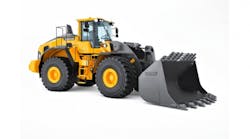For multiple-branch companies, standardizing the fleet eases operations and benefits rental customers.
When I consult for a rental company about how to improve operations, I am amazed by the diversity of brands of the same equipment in the company's fleet. When I was the president of a major rental company, I saw the same diversity - a lack of standardization in fleet - while evaluating a prospective seller. Many brands and similar yet different sizes of the same equipment were offered.
Less sophisticated operators tend to buy equipment based not on a fleet strategy but on a show special or at random.
For example, a manufacturer at a trade show displays a 185-cubic-foot-per-minute air compressor at a low price with a large sign saying "show special." Some buyers give no thought to the equipment's operating cost or the fleet compatibility and think only of the acquisition cost at that moment.
Those operators without a fleet strategy wind up with fleets that have many brands of the same equipment. There are often inconsistencies in equipment categories as well as many brands of each machine type.
The same can be said of various equipment sizes. Many smaller, less sophisticated operators want to offer every size of generator from 5 kilowatts to 100. What the operator should do is standardize on a few common sizes, e.g., 5 kW, 15 kW, 25 kW, 50 kW and 100 kW. Standardizing sizes pertains to all equipment categories.
I suggest that operators offer a primary and a secondary source for all products. Do not offer four or five brands for the same product. Also, standardize the product offering by manufacturer.
Why standardize? While there are many reasons to standardize fleet in a multilocation equipment rental company, the local one-store operation also will benefit from standardization. Operations and profitability will improve, and management will find it easier to operate the company.
Fleet standardization in a multibranch operation includes additional benefits:
n Transferring equipment between multiple branches is simpler when the brands offered are standardized. The success of any large rental company depends on the company's ability to transfer equipment between branches and improve time utilization. Every step must be taken to ease transfers.
You would be surprised, and I have learned from experience, that some branch managers do not readily accept other branches' equipment. If a branch has six Ingersoll-Rand 185 air compressors, the branch manager might be reluctant to accept another manufacturer's brand. You see, branch managers are often strategic!
The branch manager wants a trouble-free new fleet. The equipment being transferred in should be consistent with the receiving branch's existing fleet, and most important, the equipment must be in good working order and visually attractive.
n A company's image is vital in a multibranch operation. Image can be defined in many ways, from service to facilities to the professionalism of the personnel, but critical to image is the rental equipment. Think of the perception of a customer who does business with your company in multiple locations. The customer wants to know that regardless of the branch he or she is renting from, the equipment will be similar in quality, fleet age, brand and performance.
Image is particularly critical for the rental giants with large national accounts. These accounts often rent from 25 or more branches simultaneously. These large customers, such as automobile manufacturers and refiners, will not tolerate a fleet of inconsistent equipment from the rental company. Large customers, as a prerequisite to their requests for quotation, often dictate the equipment brands they deem acceptable. These large buyers often state the maximum fleet age of the equipment they will accept at their job sites and plants.
n Mechanic training is simpler when fewer equipment brands are stocked. The more brands carried, the more training required. It is faster and less expensive to repair standardized equipment.
n Tools are a small cost to a rental operation, but with multiple operations, the cost could multiply. Many manufacturers' equipment requires tools unique to their equipment brands and types.
n A rental company saves money on spare parts when using one or two brands instead of many because parts are not usually interchangeable between manufacturers. Other parts-related benefits of carrying fewer brands include less storage space, lower cost of capital, less insurance, less obsolescence, easier bookkeeping and less additional handling of the parts.
n Vendor negotiations vs. the show special - which choice do you think will result in the most savings? The vendor can and should be your partner. Significant cost savings on equipment acquisition can be negotiated if a rental company develops a fleet plan standardized around a primary and a secondary vendor.
As the large rental companies streamline their supplier bases and many large manufacturers lose supply agreements, I predict that these manufacturers/dealers will look to form long-term supply relationships with smaller local rental companies. Large manufacturers will be at risk because they will not be the suppliers to the large rental companies. These manufacturers have fixed-cost operations; they will cherish agreements that provide outlets for their equipment.
Only by standardization and commitment will a smaller rental company achieve savings.
n Fleet age has to be considered when standardizing a fleet in multiple branches. Branch managers are reluctant to accept equipment from another branch if they think they will inherit the other branch's old fleet problems. The one exception is when the receiving branch sees a potential gain from the sale of older, well-depreciated equipment.
n A clean, well-maintained fleet of consistent quality facilitates fleet disposal. With fewer brands, it is easier to advertise, to sell quantities of the same equipment and, most important, to build a customer base to purchase your older fleet. When one has a fleet made up of show specials, one can assume that the disposal process also will require show specials - low prices.
Other considerations A branch manager has more financial incentives tied to the branch's financial performance than to the company's financial performance, creating the possibility of problems between branches transferring equipment.
I have seen it all in my career in rental: a branch transferring broken equipment that had to be winched off the delivery truck to another branch; equipment that required extensive repairs; equipment that was received in branch B, broken and winched back on a truck and returned to branch A.
When branch A transfers equipment to branch B, the equipment should be the newest and latest. If the equipment received by branch B requires repair and branch A did not alert branch B about the problem, branch B should rebill branch A for the repairs.
When establishing a freight policy, several choices are appropriate, including splitting the cost of freight between sending and receiving branches or having the corporation absorb the cost to encourage transfers. Also, all the freight cost can be absorbed by branch A or B, depending on how much the equipment is needed by the receiving branch or how much the sending branch wants to rid itself of the expense of owning the equipment.
Transferring the fleet among operations will increase the equipment's utilization and the company's profitability.
The same strategies that work in transferring equipment and standardizing fleet in a multibranch operation are the same strategies that bring financial success to any rental company, regardless of size. The key is to take the time to develop a strategy, a fleet plan and a business plan for your rental operation.


